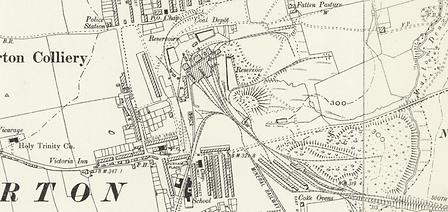m006A
Murton Colliery
Murton
54.817940,-1.379962
Dalton Winning Colliery
East Pit
Opened:
Closed:
1838
1991
Entry Created:
21 Jan 2022
Last Updated:
21 Jan 2022
Reclaimed
Condition:
Owners:
South Hetton Coal Co. (1843), National Coal Board (1947), British Coal (1986)
Description (or HER record listing)
"Murton Colliery was commenced in 1838, and after tremendous difficulties, was sunk to the Hutton seam, a depth of 246 fathoms. The other workable seams won in sinking were the Five Quarter seam, 178, Main coal, 204, and Low Main, 226 fathoms. There are three shafts, two of which are sub-divided, and used for drawing coals and men ; the third, or West pit, is used as an upcast shaft for ventilating purposes. The ventilating arrangements are on a most extensive scale, a volume of not less than 460,000 cubic feet of air per minute being made to circulate through the workings, which is supposed to be the largest quantity passing the workings of any single colliery. Electricity and gas are used for lighting. The daily output is over 3000 tons, and includes steam, gas, household coal, &c., in the production of which, including the coke-works, nearly 2000 men and boys are employed. The coals from this colliery are shipped principally at Seaham Harbour and Sunderland, the company having a private line of their own to the former port."
- Extract from Whellan's 1894 Directory of County Durham retrieved from Durham Mining Museum

Ordnance Survey, 1898

Murton Colliery, 1900. Source: Newcastle Libraries
Have we missed something, made a mistake, or have something to add? Contact us
Historic Environment Records
Durham/Northumberland: Keys to the Past
Tyne and Wear: Sitelines
HER information as described above is reproduced under the basis the resource is free of charge for education use. It is not altered unless there are grammatical errors.
Historic Maps provided by

